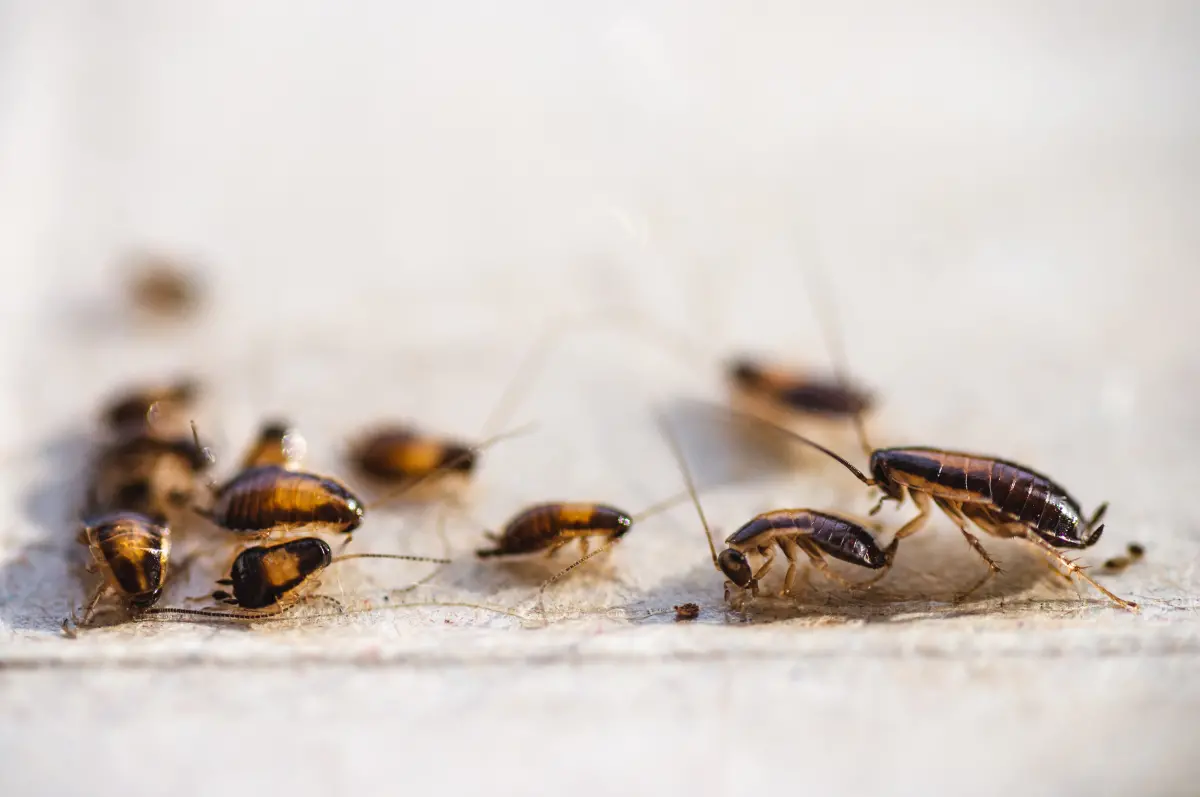Our Guide To Bed Bugs With These Travel Tips
Bed bugs are a unique pest. Most bugs live outside and work their way in through exterior walls. These pests are easily managed with exterior products and exclusion methods. But bed bugs live almost exclusively inside in furniture, and ride into man-made structures on humans. How do you control a bug like that, especially when traveling?
The most effective control for bed bugs is routine inspections, especially inspections done with canine bed bug inspectors at the hands of professional exterminators. Dogs work quickly to sniff these bugs out. But, while routine inspections will dramatically reduce bed bug infestations and arrest issues before they grow into a serious issue, they do not provide 100% protection from a bed bug incident occurring.
It’s best to equip yourself with the know-how to prevent bed bugs when you’re traveling.
What You Need to Know About Bed Bugs When Traveling
Since these tiny bugs ride in on guests, they can slip past all external pest control measures and avoid the watchful eye of even the most diligent cleaning staff.
If you discover that your room has a bed bug in it, there are three things you should immediately know:
- That bug may be the only bug in the room. It could have come in with the guests that came before you.
- If that bug came from an infestation in the room, it may only be a small and localized infestation. A business that has routine inspections can still have a small, localized infestation pop up between visits. It is okay to allow management to move you to another room, as long as it is not adjacent, above, or below the infested room. Bed bugs can travel through wall voids.
- If you are offered another room, be sure to ask a few questions. Find out whether or not the business has a bed bug pest plan. If they don’t, you may want to consider finding another place to stay.
5 Tips To Avoid Bed Bugs (Before Your Trip)
- Before you leave your home, check the web to see if a report has been filed on the place where you’ll be staying. Numerous reports, or reports that show that a business takes no precautions when it comes to bed bugs, should influence your decision on whether or not to stay there, if bed bugs are a concern for you.
- Before you spend the night anywhere, perform an inspection. If it is convenient to leave your bags in your vehicle, do so while you check your room. If it is not convenient, leave your bags in the hall, or place them on the floor in the bathroom while you perform your check.
- Inspect sheets, pillowcases, mattresses, box springs, bed frames, baseboards, outlet covers, and upholstered furniture for tiny black droppings, black streaks, black patches, brown blood stains, shed insect skins, tiny white eggs, or the presence of bed bugs. This inspection can be as detailed as you want it to be, but be sure to check all seams and stitching closely. Bed bugs tuck themselves in tight hiding places.
- No inspection is 100%. Bed bugs are clever hiders. It is important to use precautions during your stay. Use the luggage stand provided or place luggage on a table when bringing items out to use. It is also acceptable to use the dresser drawers provided. Refrain from leaving clothing on the floor, draped over furniture, or lying on the bed. Bed bugs deposit eggs in the seams of luggage, bags, and clothing.
Preventing Bed Bugs After Traveling
Unlike most bugs that make their way into your home from the outside, bed bugs are experts at hiding in your luggage and clothing, making it crucial to take extra precautions when unpacking after a trip.
To minimize the risk of bed bugs taking root in your home after a vacation, follow these tips:
- Check your luggage before entering your home. Inspect seams, pockets, and hidden areas where bed bugs might be hiding. If you suspect an infestation, keep your luggage outside or in a garage until it can be properly treated.
- Unpack in a controlled area, such as a laundry room or garage, away from bedrooms and living spaces. Avoid placing your luggage on carpets or upholstered furniture where bed bugs can easily hide.
- Wash all clothing, bedding, and linens from your trip in hot water and dry them on high heat. This will eliminate any bed bugs or eggs that may have hitched a ride. Consider washing these items separately from your regular laundry to prevent cross-contamination.
- Thoroughly vacuum your luggage, paying close attention to seams, pockets, and folds. After vacuuming, dispose of the vacuum bag or empty the canister contents into a sealed plastic bag and discard it outside your home.
- Stay alert for signs of bed bug activity, such as bites on your skin, blood stains on bedding, or small dark spots on furniture. If you suspect an infestation, contact Schendel Pest Services for a professional bed bug inspection.
Prevent and Get Rid of Bed Bugs With Expert Services
While the above tips will definitely help to protect you from bed bugs during your travels, it is important to understand that these bugs are extremely small and extremely clever. They’ve been dwelling with humans for centuries. That means they know how to hide, feed, and spread without our detection.
If you want to make sure that bed bugs don’t take root in your home after you return from a vacation, schedule a bed bug inspection. At Schendel Pest Services, we employ bed bug sniffing dogs that can smell bed bugs in all stages of development. If you need your belongings checked after a trip, or you’d like a full inspection of your home, we can help.
Bed bugs are a growing problem in the U.S., but they don’t have to be a problem for your family! Let the team here at Schendel Pest Services stop those tormenting bugs before they take root in your home.








